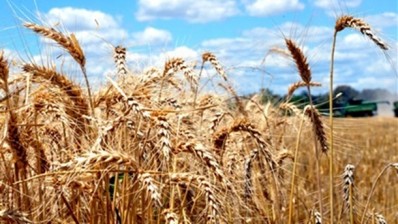Salt-tolerant durum wheat to drive yields, Australia

Australia is a key wheat exporter to major Asian markets and according to USDA data is the world’s third largest exporter after Canada and Europe. It produced around 27.89m metric tonnes in 2010/11 and exported 18.66m tonnes of this.
Kylie Williams, communication advisor at CSIRO, told FoodNavigator-Asia, “the breakthrough will enable wheat farmers to achieve higher yields of durum wheat in saline soils.”
“Salinity is one of the most significant environmental issues facing Australian agriculture today,” Williams said.
The salt-tolerant wheat durum has been developed following 15 years of collaborative research between the Commonwealth Scientific and Industrial Research Organisation (CSIRO) and the University of Adelaide.
The researchers have isolated two salt-tolerant genes, Nax1 and Nax2, from the old wheat relative, Triticum monococcum.
Dr Rana Munns, leader of the project explained “both genes work by excluding sodium, which is potentially toxic, from the leaves by limiting its passage from the roots to the shoots.”
Through traditional, non-GM breeding methods aided by molecular markers the team was able to then introduce the salt exclusion genes into durum wheat lines. Successful field trials were conducted in 2009 by the researchers.
“The research is the first of its kind in the world to fully describe the development of a salt-tolerant agricultural crop; from understanding the function of the salt-tolerant gene in the lab to demonstrating increased grain yields in the field,” Williams noted.
A premium crop
Durum wheat often has a lower salt-tolerance than bread wheat, she said, but, “it attracts a premium price because of its superior pasta making qualities.”
Dr Richard James, CSIRO researcher, said “farmers now have additional options for maximising profits by growing a premium wheat in those more saline paddocks which they may typically avoid or reserve for less valuable crops.”
The CSIRO works closely with breeding companies, Williams said, and “we develop wheat plants with desirable traits and then pass this information on to breeding companies who develop them into commercial varieties.”
The research findings have been published in the Nature Biotechnology journal.
















